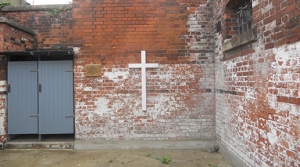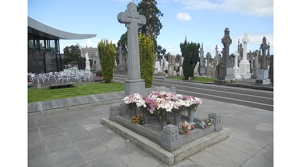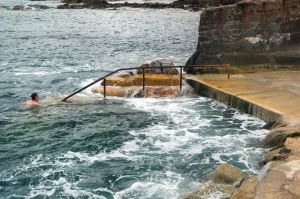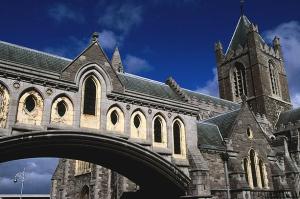This year, 2016, marks the centennial of the Easter Rising, the seminal event in Irish revolutionary history, which led, in six short years, to the establishment of today’s Irish Republic.
The Rising lasted only six days, from Easter Monday to Saturday, but the brutal British reaction to it galvanized the Irish people into action. Initially, the Rising was unpopular with the locals. Many Dubliners had close ties to the British establishment, such as the “separation women,” the wives and family of Irishmen off fighting in the Great War for Britain. But the swift British military trials and executions of the leaders shocked the Irish people and turned the fifteen martyrs—Sir Roger Casement, the sixteenth and last rebel executed, would be hanged on August 3 in London—into national heroes.
In Dublin today there are nine museums—including three new ones—and landmarks dedicated to the men of 1916 and the heroes of the War of Independence. Their efforts eventually secured 26 of Ireland’s 32 counties from the British for the first time in 700 years—a David and Goliath quixotic feat that still amazes a century later.
1. Kilmainham Gaol
There is probably a no more solemn place to begin a tour of rebel Dublin than at Kilmainham Gaol. The jail is a stark, bleak monument to 18th century penology. (Ironically, its dreariness and creepiness makes it one of the favorite places for movie-makers in all of Ireland.) It was here that 14 of the sixteen leaders were executed. They surrendered on April 29 and the executions began on May 3, and continued unabated until May 12, 1916.
The guided tour, which takes about 45 minutes, brings you throughout the jail. One of the first stops is the Catholic Chapel where Joseph Mary Plunkett, one of the signatories of the Proclamation and a Commandant-General in the Irish Volunteers, married his fiancée, Grace Gifford. Within the hour he was taken out and shot. The tour also shows you the cells where many of Ireland’s prominent rebels—Charles Stewart Parnell, Padraig Pearse and Eamon de Valera among them—were held. Perhaps the highlight of the tour is a walk in the breaker’s yard, where the 1916 rebels were executed. One cross marks the spot where thirteen men were shot standing and another cross marks the spot where the socialist labor leader James Connolly, severely wounded in the leg during Easter Week, was executed sitting in a chair. Besides the tour, there is an impressive museum with many artifacts from 1916.
Kilmainham is about a 10-minute taxi ride from the center of the city and can also be accessed by bus. During the summertime there are long lines and it’s a good idea to get there early.
2. Arbour Hill Cemetery
After visiting Kilmainham it might be fitting to grab a waiting taxi and take a short ride across the River Liffey to Arbour Hill, the final resting place for the executed leaders. Arbour Hill was a British military installation, prison and cemetery. After the executions the British were wary of the Irish propensity for celebratory funerals for their rebels (the funeral of Jeremiah O’Donovan Rossa is a prime example) and under the cover of darkness brought the bodies to an open pit at Arbour Hill and poured quicklime over them—insuring there would be no parades in their honor.
Today the area is serene as the long mass grave of fourteen rebels sits quietly in front of the Irish Tricolour. The name of each rebel is marked on the side in both Irish and English. President Kennedy, on his visit to Ireland in 1963, laid a wreath here in honor of the dead martyrs.
3. Visitor Centre at Cathal Brugha Barracks
One of the hidden historical treasures of Ireland is located at Cathal Brugha (formerly Portobello) Barracks in Rathmines, a short taxi ride from the city center. The barracks is named after Ireland’s first Minister for Defence, yet its visitors center is a monument to Brugha’s arch enemy, General Michael Collins, the first leader of the Irish Army after independence. Collins was perhaps the greatest revolutionary of the 20th century, the inventor of urban guerrilla warfare, whose ruthlessness—his personal squad, “The Twelve Apostles,” assassinated the British Secret Service in Dublin in one morning—and political savvy in negotiating the Anglo-Irish Treaty of 1921, brought the modern Irish state into existence. He is admired by such diverse international personalities as Mao Tse-Tung, Yitzhak Shamir (the seventh Prime Minister of Israel), and Nelson Mandela.
The small museum, which was originally a military jail, has a sordid history of its own. Francis Sheehy Skeffington—nationalist, pacifist, feminist—was murdered here, along with two other men, by a crazed British officer during Easter Week 1916. The bullet holes are still evident in the bricks of the small courtyard.
In the museum itself there are several artifacts belonging to Collins. The desk he used at 5 Mesphil Road is there (the marks from the British jimmying the drawers remain) as is one of his Colt revolvers. Behind the desk on the wall is the tricolor flag that covered his coffin in 1922. There are also weapons used by his notorious Squad. The rest of the museum is a history of Óglaigh na hÉireann, the Defence Forces Ireland, from 1922 to the present day.
The reason this museum is such a secret is that admittance is by appointment only. It is only open Tuesday and Thursday from 10 a.m. to 12:30 p.m. Appointments can be made by contacting the Barracks Adjutant at 353-1-804-6362. The tour is conducted by a member of the Irish Army and usually, if time permits, he is happy to take you around the grounds and show you the buildings that Michael Collins used as his residence and offices just before his death in 1922.
4. Pearse Museum
Padraig Pearse, the “President” of the Provisional Government during that fateful Easter Week, was the first to be executed on May 3, 1916. For good measure, the British also executed his brother, Willie, although Willie had little to do with the planning of the uprising. Padraig Pearse was picked as the “face” of the revolution by Tom Clarke, the incorrigible Fenian, because of Pearse’s writing and speaking skills. His speech at the grave of Jeremiah O’Donovan Rossa at Glasnevin Cemetery in 1915 marked one of the pivotal moments in the march to revolution. He is also the author of the 1916 Proclamation, Poblacht Na hÉireann, the equivalent of America’s Declaration of Independence.
At the time of their deaths the Pearse Brothers were running St. Enda’s, a progressive Irish school in Rathfarnham, which is about 20 minutes from the city center either by the #16 bus or taxi. The school is located on the grounds of the Hermitage, where United Irishman and famed Irish patriot Robert Emmet is said to have secretly romanced his sweetheart, Sarah Curran.
Recently the 18th century building has been faithfully restored and serves as a museum to the Pearse brothers. In it you can see the dorm where the students lived, plus Padraig Pearse’s office. There are also several sculptures by Willie Pearse on display.
5. National Museum of Ireland at Collins Barracks
The National Museum of Ireland has a long tradition of exhibitions relating to Easter Week 1916. The Museum will put on show one of the largest display of materials from this period in a new exhibition entitled “Proclaiming a Republic: The 1916 Rising” at the Museum of Decorative Arts & History, Collins Barracks, opening on March 3, 2016. Many of the exhibited objects have never been on public display before while others, such as the Irish Republic flag which flew over the GPO, have been specially conserved.
Through the combined effect of the objects, words and imagery of the period, visitors to the exhibition will be confronted with the physical reality of the events of Easter Week, following the stories of those caught up in the events of that momentous week—civilians, combatants and survivors alike. Collins (formerly the Royal) Barracks is located off Wolfe Tone Quay at Benburb Street and is a short taxi ride from city center. It is also accessible by Luas Tram or foot. On the second floor is a separate exhibit remembering those who fought in the War of Independence.
6. Glasnevin Cemetery
For some reason the Irish have a great affinity for cemeteries and one of Dublin’s most fascinating places is Glasnevin Cemetery—the afterlife home of over one million Dubliners. It features the world’s first cemetery museum and offers a guided tour of the cemetery where so many of Ireland’s heroes are buried. Over 75,000 people visited the cemetery last year, making it one of the most popular—and unlikely—tourist destinations in Ireland.
As you walk in you’ll see the grave of Sir Roger Casement, the only 1916 martyr buried here. Next to Casement is the grave of Kevin Barry and the other “Forgotten Ten,” young men who were executed by the British in the period between November 1920 and the Truce in July 1921.
Behind these graves is the appropriately named “Republican Plot” where some of Ireland’s most famous rebels are buried. Here lies Jeremiah O’Donovan Rossa, John Devoy, Cathal Brugha, Harry Boland, Maud Gonne, Countess Markievicz and the GPO nurse who led Padraig Pearse to surrender, Elizabeth O’Farrell, among others. On its outside ridges you’ll find the grave of Eamon de Valera who, for 50 years, was either Taoiseach (Prime Minister) or President of Ireland.
A short stroll away is the grave of Michael Collins, just outside the museum’s café. His grave is covered with flowers and notes from admirers. After visiting Glasnevin it’s not a bad idea to exit through the south gate and enjoy a pint at one of Dublin’s great drinking spots, John Kavanagh’s Gravediggers Pub. Glasnevin is 15-minutes from the city center and can be reached by #9 bus or taxi.
The newest rebel museums
7. Richmond Barracks
Richmond Barracks will officially open on May 2, 2016 to commemorate the centennial of when the first Easter Rising rebels were marched through its doors. On July 31 they will celebrate “Francis Ledwidge Day” in honor of the poet/soldier who died in the Great War. Richmond Barracks is close to Kilmainham Gaol and one may want to visit both of them on the same trip.
After the rebels surrendered at the end of Easter Week they were brought to Richmond Barracks in Inchicore for classification. The big shots like Padraig Pearse and Tom Clarke were quickly condemned to death and removed to nearby Kilmainham Gaol for execution. The British then had to separate and evaluate the rest of the rebels according to their importance. (It was at this time that Michael Collins famously and casually walked across the room and joined a contingent of far less dangerous Volunteers, saving himself a stiffer sentence.)
The insurgents were fingerprinted, but no mug shots were taken, which would turn into a big problem in the years to come when no one in the British Service knew what Collins looked like. Richmond Barracks was also the destination of teenage rebels like Seán Lemass, future Taoiseach of Ireland, and Vincent Byrne, a shooter in Collins’ Twelve Apostles who, ironically, would be the commandant in charge of the Barracks by 1922. Many women of the Cumann na mBan and the Irish Citizen Army were brought here including the Countess Markievicz and Elizabeth O’Farrell who arranged, along with Pearse, the rebels’ surrender.
8. An Post GPO Witness History
The General Post Office on O’Connell Street remains the most iconic building in Ireland and now it has a museum of its own. “An Post GPO Witness History” is an engaging, interactive visitor attraction bringing history to life through technology, video, sound and authentic artifacts—many previously unseen.
An immersive semicircular audiovisual space puts visitors right inside the GPO during the five days in which it was both the military command center, and the seat of the Provisional Irish Government. A digital recreation of Dublin as it was in 1916 provides both an immersive street level experience, and a “God’s Eye” strategic overview of events, to highlight the difficulty of coordinating a national revolution from the GPO, in a city under siege from overwhelming Crown forces. It reveals dramatic instances of shocking violence, and inspiring courage, shown on all sides. Visitors undergo the full terror of the devastating British artillery bombardment that reduced the center of Dublin to smoking ruins. The exhibit opens on March 29th and the tour is open 365 days a year, 9 a.m.-5:30 p.m
9. 1916 Rebellion Museum at 16 Moore Street
By Friday of Easter Week the rebels had to abandon the burning GPO. They came out on Henry Street and made their way to Moore Street. After tunneling through several buildings, men like Pearse, Clarke, Plunkett, MacDiarmada and Connolly—five of the seven signatories of the Proclamation—assembled in #16 where they decided to surrender.
By 2000 numbers 14, 15, 16 and 17 Moore Street were in danger of being destroyed as gentrification threatened Moore Street, which, with its fish and vegetable mongers, has remains much the same in the 21st century as it was in the time of Joyce and O’Casey. Then the “Save 16 Moore Street” came to the rescue. After much wrangling the Irish government bought the buildings and they were saved from destruction. Even today there is much controversy surrounding the project and although slated to open at the Rising’s centennial in April, the project may run late.














